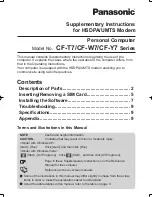
E T X S E R I E S L I T H I U M B A T T E R I E S
3
enhanced, and fault indication is included. All components associated with main electronic
battery disconnect are redundant. The built-in redundancy ensures that no single point
failure results in the battery unintentionally disconnecting. The design aligns with the
requirements for a FAA approved lithium battery as per RTCA performance specification
DO-347 and DO-160. Our ETX900-VNT includes a thermal run-away containment
system making it fully compliant to DO-347 specification.
In the event of a charging system failure where the voltage increases to above 15.5V, the
resistance to charging current increases, and above 16V the charging current is completely
blocked. The time delay for this feature is 1 second to allow the
aircraft alternator’s
over
voltage protection (crowbar circuit) to activate first. This design offers charge voltage
protection greater than 40V. The discharge current (current out of battery) is unaffected in
this situation. EarthX requires having automatic over-voltage protection (crowbar) for
alternator type charging systems (not required for <20 Amp pad mount standby alternators).
The
battery’s micro
-controller monitors all failure modes, and reports failures with a built-in
LED indicator and discrete output. The discrete output for external fault monitoring is a
single wire connection with a
¼” quick connect terminal
.
The output is a “current sinking”
type circuit (see diagram below) that can handle 100mA (connects the discrete output to
battery ground if a fault is present). This output can be connected to an external 12V LED
or general purpose discrete input of an EFIS. The fault output has two states; slow flashing
(5 second on/ 5 second off) or solid.
The slow flashing fault can indicate an improper state of charge or a problem with the cells
internal to the battery. If the battery voltage is outside the normal range of operation, 12.8V
to 14.6V, the battery is over-discharged or over-charged, most likely the result of an issue
with the electrical/charging system. If the battery voltage is within the normal operating
range, with a slow flashing fault, it is indicating an abnormal condition with a cell, such as
one cell
’
s state of charge is very different as compared to the other cells (high cell charge
level imbalance). The slow flashing fault may come on briefly during or following periods
of high current charging, and is not a concern. But if the fault persist, comes on
consistently during changing, or remains (charging or not), the battery will need to be
replaced.
The solid fault indicates a BMS hardware failure. For example, if the micro-controller fails
the fault indication output is activated (on solid). If the fault persist, comes on and stays on,
the battery will need to be replaced.






































